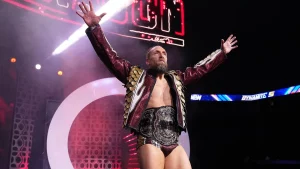Sarkar emphasizes the importance of consistent cash flow generation and incremental return on capital employed (ROCE) as key metrics for identifying long-term wealth creators.
Focusing on a disciplined, value-oriented approach, he highlights how combining patience with selective investing in high-quality businesses can unlock sustainable growth over time. Edited Excerpts –
Q) Thanks for taking the time out. Please take us through the performance of the fund in June when you Multicap fund clocked more than 19% return?
A) Leading the gains is our largest holding, which has surged by an impressive 61.6%. It is a company in the aerospace and defence space with a very healthy and growing order book.
A mid-sized upstream oil and gas company, which holds the second-largest weight in our portfolio, has also shown strong performance with a 26.5% increase.
Our third-largest company is a life insurance company that is part of the Nifty 50 index, which had modest gains of ~5% for the month of June.
These results underscore our balanced approach, capturing high-growth potential while maintaining exposure to stable, long-term value creators.
Q) It is a newly launched fund, but the numbers are impressive especially for the past few months. Please take us through the investment objective?
A) Our goal is to compound capital steadily over time without taking undue risk. We follow a disciplined, value-oriented approach, focusing on high-quality, consistent compounders temporarily overlooked by the market.This disconnect often creates a favourable risk-reward equation, allowing us to enter at attractive valuations. We believe growth and value are joined at the hip, true value lies in sustainable growth trading at attractive prices.
Simply put: buy quality when it’s out of favour and let compounding do the heavy lifting. It’s not about chasing momentum, but about patience, conviction, and a long-term perspective.
Q) Being sector and market cap agnostic gives you wide flexibility. How do you ensure diversification and risk management without restricting yourself to specific segments?
A) We do run a fairly concentrated portfolio, but we ensure adequate diversification by limiting exposure to any one sector, typically, we avoid having more than two holdings from the same space.
Our value-conscious investment style acts as a natural risk filter. We’re not in the business of paying up for growth, which helps us avoid frothy valuations and the risks that come with them.
This bottom-up discipline allows us to stay selective, reduce downside risk, and compound capital efficiently over the long term.
Q) How do you assess management quality, especially when investing in family-owned companies versus professionally run firms? Are there different evaluation parameters?
A) Management quality is a cornerstone of our investment process. We prioritize companies led by leadership teams with a proven track record.
We remain vigilant for red flags such as frequent equity dilution or questionable related-party transactions. Additionally, in professionally managed firms, incentive alignment plays a crucial role; we carefully assess ESOP structures and compensation policies to ensure management’s interests are closely tied to long-term shareholder value creation.
Q) You hold a portion of your portfolio in liquid ETFs. Could you share your strategy behind maintaining cash equivalents in your portfolio? Is it tactical or a consistent allocation?
A) We currently maintain a portion of the portfolio in liquid ETFs, and this is a tactical decision rather than a structural allocation.
There’s an old market adage in the equity markets that says you either get good prices or good news, seldom at the same time.
In the current environment, particularly in the mid and small-cap segments, valuations are stretched, and sentiments are running high.
That calls for a degree of restraint. We believe it’s prudent to keep some dry powder ready. This cash position gives us the flexibility to deploy when more compelling opportunities emerge.
Q) Let’s talk about markets. Well, we have seen volatile 1H2025 but bulls managed to have an upper hand. How do you see markets panning out for the rest of the calendar year?
A) There are numerous macroeconomic factors in flux, ranging from inflation dynamics and interest rate policies to global geopolitical developments.
Given this complex backdrop, the market appears somewhat elevated at current levels. This suggests the possibility of a meaningful correction, either in terms of price or time, before we can expect a sustained rally.
In such an environment, it has become increasingly difficult to scout for genuine value opportunities.
Q) What is your wealth creation mantra which have worked for you? It could be a ratio or metric which you always track.
A) Over the years, I’ve realized that cash flow is paramount. If a company has generated positive operating cash flow consistently for the past decade, it’s a strong signal that’s hard to overlook, as very few companies meet this benchmark.
Alongside cash flow, I closely track incremental Return on Capital Employed, which has been a reliable metric in identifying quality wealth creators.
(Disclaimer: Recommendations, suggestions, views, and opinions given by experts are their own. These do not represent the views of the Economic Times)







